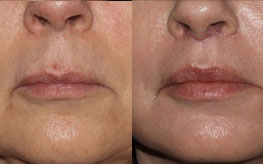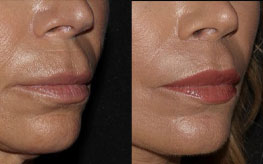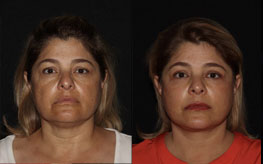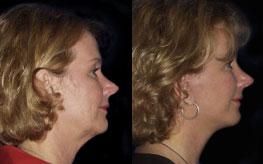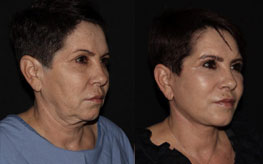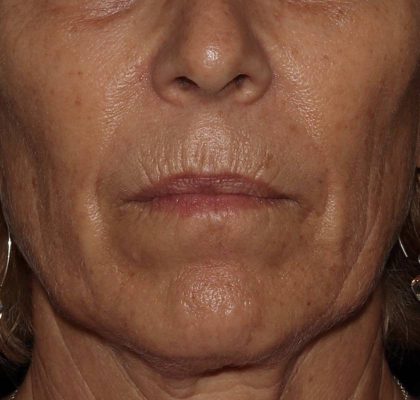Laser Resurfacing and Facial Peels
Conveniently located to serve the areas of San Diego, CA

Facial resurfacing is a way to treat skin damage primarily by eliminating the top layers of skin, allowing a new layer of skin to surface and heal more smoothly. This can be done using a variety of methods, including chemical peels, dermabrasion(sanding), and laser resurfacing, all of which have their advantages and disadvantages. 1
Skin damage is an age-old phenomenon. Whether it’s from years of sun exposure or simply a side effect of the natural aging process, mild to moderate skin damage is a common, sometimes unavoidable, occurrence for most people. Rest assured, while wrinkles, changes in pigmentation, scarring, and other forms of naturally occurring skin damage are nothing new to the world, treatment for these symptoms is constantly evolving. Dr. John T. Alexander and his staff at Alexander Cosmetic Surgery are at the forefront of innovative treatments for skin damage through the process of facial resurfacing procedures.
To experience the Alexander Cosmetic Surgery difference, call (858) 455-7557 or fill out our contact form to schedule a virtual or in-person consultation.
Contents
Before and After Photos
About Facial Resurfacing
Your face is on display at all times, meaning it is only natural to be cautious about any procedure intending to rejuvenate the skin on your face. Many patients who visit Alexander Cosmetic Surgery are pleasantly surprised to find how simple, easy, and safe some skin rejuvenation treatments, such as facial resurfacing procedures, can be. Performed by some of the best in the business, the team at Alexander Cosmetic Surgery will utilize one or multiple different types of facial resurfacing procedures based on your individual needs in order to treat a variety of symptoms. These symptoms include, but are not limited to:
- Static and dynamic wrinkles
- Changes in pigmentation or skin tone
- Vascular conditions such as visible blood vessels or vascular lesions
Facial resurfacing procedures intend to treat various forms of skin damage by eliminating the top layer of skin, or epidermis, and stimulating growth of the underlying layer of skin, or dermis. 2 These procedures come in many different forms and are constantly evolving. Alexander Cosmetic Surgery utilizes three different categories of facial resurfacing procedures based on your individual needs. These categories include chemical peels, dermabrasion(sanding), and laser resurfacing.
- Chemical Peels: During a chemical peel procedure, a topical solution is applied to the skin in order to eliminate the epidermis layer of the skin. The topical solution is then removed, revealing the underlying layer of skin which is often more polished and fresh in appearance.
- Dermabrasion: A dermabrasion, or sanding, procedure, aims to gently scrape away damaged skin with a motorized drill that contains a fine wire brush.
- Laser Resurfacing: Laser resurfacing procedures utilize potent laser lighting technology to eliminate the epidermis and directly target damaged skin. 2
Alexander Cosmetic Surgery professionals are equally adept at performing all three of these types of resurfacing procedures. During a personal consultation, they will examine your personal needs to determine which treatment, or perhaps combination of treatments, is best for you.
Benefits
There are countless potential benefits associated with facial resurfacing procedures. Facial resurfacing procedures can provide physical benefits by improving the texture, feel, and overall appearance of your skin. Some possible benefits of undergoing facial resurfacing procedures include:
- Removal of static wrinkles, or wrinkles that are visible regardless of facial expression
- Elimination of dynamic wrinkles, or wrinkles that might appear to deepen with facial expression
- Improvements in pigmentation, such as eliminating freckles, melasma, or other sun-related skin damage
- Healing of scars
- Improvements to vascular-related skin imperfections such as visible blood vessels on the surface of the skin, vascular lesions, and overall facial redness
- Treatment for loss of skin tone, skin firmness, or development of cellulite
The benefits of facial resurfacing procedures aren’t just physical. There is no feeling that compares to the confidence boost of having the skin you’ve always dreamed of. Whether you have severe skin damage that interferes with your overall quality of life, or merely have imperfections you would like to address, a visit to Alexander Cosmetic Surgery can give anyone the results they’ve been looking for.
Ideal Candidates
Although facial resurfacing procedures are not as complex as surgical cosmetic procedures, they consistently provide impactful results. As such, the ideal candidates for facial resurfacing procedures are people who are looking to rejuvenate their skin without having to commit to a more invasive treatment.
Skin damage is a natural part of the aging process. Chemical peels, dermabrasion, and laser resurfacing procedures can help reverse this process with fewer risks and shorter recovery times than those associated with surgical cosmetic surgeries.
Essentially anyone in good health could be a potential candidate for facial resurfacing. Ideal candidates tend to be people who:
- Are physically healthy
- Are not currently taking or have not taken Accutane® in the last six months
- Have wrinkles, lines, or pigment irregularities
- Have any form of skin damage associated with the sun
- Are current or former smokers
Ideal candidates will also be open to the professional opinions of Dr. Alexander and his staff. Patients should be optimistic about the potential benefits while also maintaining realistic expectations.
Personal Consultation
Chemical peels, dermabrasion, and laser resurfacing procedures can be life-changing operations. The first step on this journey is to schedule a personal consultation with Alexander Cosmetic Surgery by calling (858) 455-7557 or filling out our contact form. Here, you will meet with an expert to discuss facial resurfacing procedures and create a plan custom-tailored to your needs. During this consultation, you will discuss your goals with a professional who will then take you through a series of examinations before recommending what treatment option is best for you. The type of procedure recommended will likely depend on your skin type, anesthesia preferences, and other factors such as the degree of skin damage and available recovery time.
Preparation
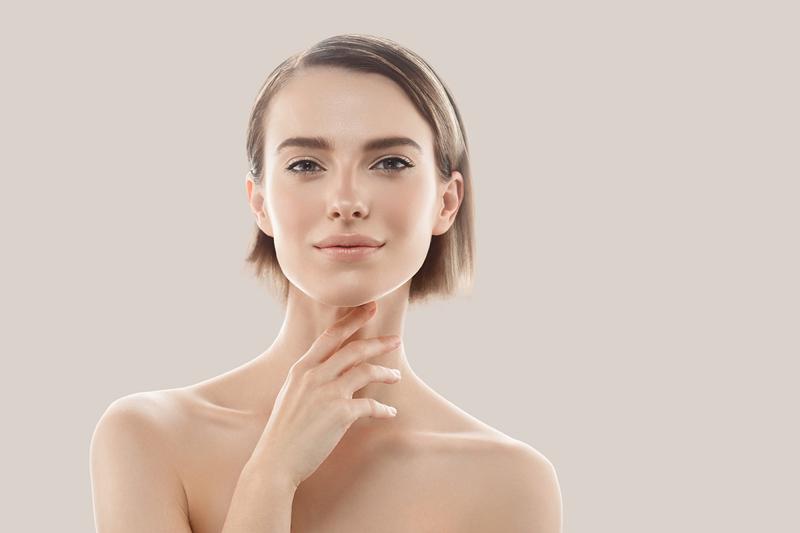
In order to ensure the procedure runs as efficiently as possible, Alexander Cosmetic Surgery will likely ask you to take a small handful of actions roughly a week or two in advance. Patients will need to get lab testing or a medical evaluation done as well as refrain from smoking in the weeks leading up to the procedure.
Our expert staff will also go over what to expect from the anesthesia used during the procedure, as well as what the recovery process might look like in order to ensure the patient is fully aware of what to expect prior to the procedure. Roughly 24 hours before the procedure, patients will begin taking preventative antibiotics. Some patients might be asked to begin pretreatment with Retin-A and/or bleaching creams.
Procedure and Recovery
Facial resurfacing procedures tend to last anywhere between five minutes to an hour. The inclusion and type of anesthesia will also vary depending on which type of procedure is performed, and how many areas are being treated. At Alexander Cosmetic Surgery, we use the following types of anesthesia:
- Topical anesthesia (cream used to numb the surface of the skin)
- Local anesthesia (skin numbed up with injection)
- IV sedation (medications administered through IV)
- General anesthesia (patient is lightly sleeping)
Chemical peels, dermabrasion, and laser resurfacing procedures all begin with a marking phase, where Dr. Alexander marks the areas that will be treated, followed by a cleansing phase, where the area to be treated is cleansed to ensure the removal of dirt, oils, or other debris. Once this is completed, patients can expect the following from each type of procedure:
Chemical peel:
- Solution is applied to the face until it begins to change color
- Solution is wiped off the face, no dressing is required after
- Skin will begin to look normal after 12 hours, with swelling subsiding within 24-48 hours
- Dead skin will begin flaking after 3 to 5 days, skin will begin to look smoother and healthier
Dermabrasion:
- Dr. Alexander gently sands the epidermis using a motorized drill with a soft brush, creating an even surface on the intended area of treatment
- A gauze dressing is applied to ensure a blister forms, thus starting the recovery process
- Skin will be red and swollen which will likely subside in a a few days to a week
- A scab or crust will form over treated area and slowly heal into a new layer of skin
Laser Resurfacing:
- The machine is set to ensure optimal depth and intensity of the laser
- Laser treatment is applied to the intended area via a hand device connected to a mobile arm until treatment is completed
- A fine mesh dressing and Vaseline are applied to the treated area
- Patient should keep gauze on face until skin is fully healed
Patients will return to the office the day after the procedure as well as 4 to 5 days later so that we can evaluate the progress of the recovery process.
Results
Alexander Cosmetic Surgery is confident that you will be pleased with the results of your procedure. With this in mind, the magic in the results takes place during the healing process. Dr. Alexander is one of the best in the business in regards to facial resurfacing. Patients should note that it might take several weeks for the healing process to complete before your final results reveal refreshed, more youthful-looking skin.
Cost of Laser Resurfacing in San Diego
Because every facial resurfacing procedure is crafted for each individual, the cost will ultimately vary depending on your particular case. The doctor will provide you with a quote following your personal consultation. Financing options are available to those who qualify.
References
- Loesch MM, Somani AK, Kingsley MM, Travers JB, Spandau DF. Skin resurfacing procedures: new and emerging options. Clinical, Cosmetic and Investigational Dermatology. 2014;7:231-241. doi:https://doi.org/10.2147/CCID.S50367
- Mayo Clinic. Laser resurfacing – Mayo Clinic. Mayoclinic.org. Published 2018. https://www.mayoclinic.org/tests-procedures/laser-resurfacing/about/pac-20385114

